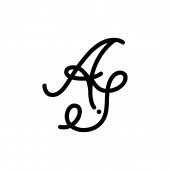DESIGN NAME:
Color Terrae
PRIMARY FUNCTION:
App
INSPIRATION:
The project comes from the desire to bring innovation in areas where digital technology is not much explored, such as archaeology.
Color Terrae indeed allows to digitalize some of the main activities of the archaeologist: identification, analysis, classification and description of stratigraphic units following the Munsell color code.
UNIQUE PROPERTIES / PROJECT DESCRIPTION:
Color Terrae is an AI-powered app created to optimize archaeologist's workflow by replacing the current inefficient paper-based processes.
AI technology comes into play with a color detection function: it is able to identify colors from photographs taken by the user, and to associate the photographed stratigraphic unit to a specific color code. Furthermore, Color Terrae offers the chance to switch to Dig Mode, an outdoor-optimized version of the app which can be really useful on dig days.
OPERATION / FLOW / INTERACTION:
Once the app is launched, the user can interact with the main area, Diary, launch the Camera, or switch to Dig Mode through settings.
Diary, as the name may suggest, works as a notebook, but also as a photographic archive. Here user can write or record his thoughts during the day at the dig, and save all the pictures he has taken. In order to have a well structured archive, all the files (notes, voice memo and pics) are divided in three sections: recents, lists and all.
PROJECT DURATION AND LOCATION:
The project started in the last quarter of 2020 and had its first demo release and test phase in February 2021 in Lugano, Switzerland.
|
PRODUCTION / REALIZATION TECHNOLOGY:
From pencil to pixels to code. The project started from rough sketches on paper sheets, then it moved to digital meeting the following softwares:
Adobe Illustrator (logo and brand identity), Sketch (wireframes, hi-fi mockups and prototype), Xcode with Swift UI (app), Core ML and Python (AI colors detector).
SPECIFICATIONS / TECHNICAL PROPERTIES:
When a picture is taken, AI technology analyses it and samples pixel by pixel in order to get the matching color unit related to a Munsell color code.
There are 1000 hex color codes learned by the AI. Since most of them are pretty similar, they are grouped in 100 color units.
Each color unit belongs to a Munsell color. Most hex color codes detected within a color unit will indicate the "winning" unit which is associated with a specific Munsell color.
TAGS:
Archaeology, Digital Innovation, Use of Technology, User Experience, App Design, Artificial Intelligence
RESEARCH ABSTRACT:
Results from interviews, researches and user tests established that a mobile app could help the archaeologist in at least three different phases:
1. During the archaeological excavation, recognise the different layers, distinguish between them and note their characteristics.
2. During documentation to assign univocal color codes to the layers to avoid confusion or misunderstandings.
3. During the study phase of the site, which usually takes place several months after the excavation and fieldworks.
CHALLENGE:
The most challenging part was to bring to digital the current paper-based process without altering the user experience.
In fact by using this app the archeologist should not change his workflow, but willingly follow the same process used previously on paper, now on digital. Understanding all the human and technical pain points has been crucial in order to come up with an appropriate digital solution.
ADDED DATE:
2021-02-13 09:03:34
TEAM MEMBERS (1) :
IMAGE CREDITS:
Simone Ardito, 2020.
|









